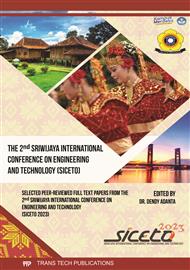p.3
p.13
p.25
p.39
p.49
p.59
p.67
Colonial Architecture's Response to the Tropical Environment: Exploring the Concept of Karsten's Garden City in Indonesia
Abstract:
Throughout the architectural history of Indonesia, particularly in Palembang, Dutch influence has left a notable mark on several buildings in specific regions. The adaptation of Dutch Colonial Architecture to the local climatic conditions in the Talang Semut area of Palembang has revealed a rich diversity in architectural styles and functions. This adaptation process bears relevance not only in historical contexts but also in contemporary and future design practices. This research employs a descriptive analysis methodology to investigate the process of adapting Dutch Colonial architecture to the tropical climate of Palembang. The findings underscore the significant impact of this adaptation, resulting in buildings that harmoniously integrate with their local environment, reducing reliance on artificial air conditioning systems. Dutch colonial architecture's climatological solutions have stood the test of time, offering a sustainable approach to architectural design that remains relevant today and holds promise for the future.
Info:
Periodical:
Pages:
59-66
Citation:
Online since:
February 2025
Price:
Сopyright:
© 2025 Trans Tech Publications Ltd. All Rights Reserved
Share:
Citation:


